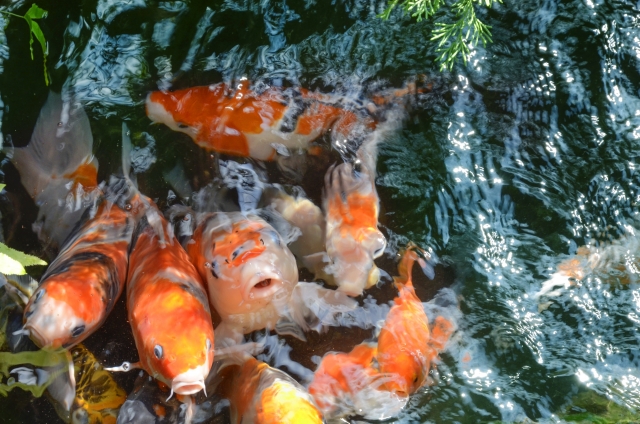I’d like to introduce and analyze into Japanese food culture on this post. The other day, my husband and I went to a local chang pong diner. We’ve been visiting the diner since we were still dating. Each cooking of the master is so nice and tasty, makes us feel nostalgic in a sense. The master is so honest and diligent, we’ve been his fan for a long time. These are miso chang pong, regular chang pong, rice balls, fried meat dumplings, and fried chicken tar tar. It was a lot, but it cost only for 2,460 yen for two of us. It’s only about 20 US dollars.
今回は、日本の食文化についての紹介と考察をしてみたいと思います。先日、地元のチャンポン屋さんに行って来ました。我々夫婦が、まだ独身の頃からよく行っているお店です。大将の手料理は、とっても落ち着くどこか懐かしさを感じさせる味で、正直一本で商売をされている様に、いつも陰ながら声援を送っています。写真は味噌チャンポン、チャンポン、おにぎり、餃子、チキン南蛮。これだけガッツリ注文しても、お値段は2人前で2,460円でした。
The atmosphere of the diner reminds me of good old days. Bring me back childhood memories.
店内の様子も古き良き昔を思い出させるような雰囲気で、昭和の子供だった私達には、とても好ましく感じられます。

It’s in the midst of COVID 19 pandemic, there was plastic sheet for protection. Probably it’s the same as all over the world, and you see this type of plastic sheet at banks, shops, supermarkets, hospitals, and city halls, almost all public places in Japan.
現在はコロナ禍のため、透明シートが貼ってありました。恐らく世界各国と同様に、現在日本では、銀行、商店、スーパーマケット、病院、役所関係、とあらゆる施設でこの透明シートが貼ってあります。

Chang pong is originally from China, same as ramen, and it developed specially in Japan. The very word “chang pong” means mixing up various things in Japanese. And Okinawa dialect “champuru” means the same. Interestingly, in Korean “champong-hada” means the same. In Bahasa Indonesia and Bahasa Malaysia, they have “campur campur” meaning the same. When I was a freshman of university, I home-stayed in a fisherman’s village in Malaysia. I heard many people talking “campur campur” implying for mixing up a lot of things.
チャンポンはラーメンと同じく中国由来の食べ物で、日本で独自の発展を遂げたものです。「ちゃんぽん」という言葉は色んなものを混ぜ合わせるという日本語になっていますが、沖縄語でも「チャンプル」というと混ぜ合わせるという意味になります。面白いことに、韓国語でも「チャンポンハダ」という同じ意味の言葉があり、インドネシア語とマレーシア語でも”campur campur” (チャンプルチャンプル)で同様のことを意味します。大学一年生の頃にホームステイしたマレーシアの漁村では、色んなことがごちゃ混ぜになっている様を、”campur campur” と話していたことを思い出します。
Something in common in this food culture is that it is among Chinese cultural area. In the process of Chinese immigrating into neighboring countries, they bring in the food culture and it developed locally and uniquely in the area. Nagasaki chang pong represents the original chang pong of Japan. Nagasaki is a port city, historically it has been opened to the world including during “the sakoku era” that Edo government of Japan closed the country except Nagasaki during 1639~1858.
この食文化に共通しているのは、華人文化圏ということ。中国人が近隣諸国に移り住む過程において、持ち込んだ食生活が現地で様々な形で花開いて行ったのです。日本では長崎チャンポンが、元祖チャンポンとして有名です。長崎は江戸時代の鎖国を含め、古くから国際港として世界各国に開かれていた海の玄関口でした。
And this is Ramen.
そして、こちらはラーメン。

Ramen is also a cuisine that is peculiar in Chinese cultural area. Here I want to explain the difference between chang pong and ramen in Japan. chang pong is something mixed up and fried together with various ingredients and noodle. Ramen toppings are cooked separately. Chang pong noodle is thicker than ramen noodle.
ラーメンも華人文化圏において特徴的な食べ物ですが、日本のチャンポンとラーメンの違いについて説明します。チャンポンは麺と一緒に様々な具材を炒めて乗せて汁をかけるというもの。ラーメンの場合、上に乗るものはそれぞれ別に調理されます。麺もチャンポンはやや太く、ラーメンは細いという特徴があります。
I like Taiwan developed ramen, “beef bone noodle” and Korean instant spicy ramyon too. They have their own interpretation and each of them are so tasty. Japan is a country that has long genuinely characteristic traditions and customs, and at the same time historically it is influenced from China immensely. There is one certain thing and it develops and thrives distinctively affecting from multiple factors and own given nativity and circumstances. I guess same thing can be said to human, country, and culture. It is so very interesting.
台湾ラーメンの進化形である牛骨麺も、韓国のインスタントヌードルの辛ラーメン(シンラーミョン)も、それぞれどこか違う切り口の魅力があって美味しかった。日本は古来より独特の文化風習を育んで来た国でもあり、また同時に歴史的には中国の影響を多く受けている国でもあるのです。一つのものがあって、それが様々な要素に影響を受けつつ独自の成長を遂げる。それはきっと人でも、国でも、文化でも、同じことが言えるのでしょう。
Love and Peace to the world, especially in this day and age!
こんな時代にこそ、世界に愛と平和を!






















